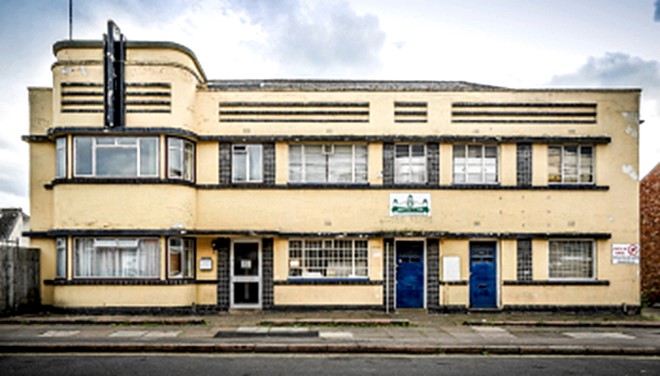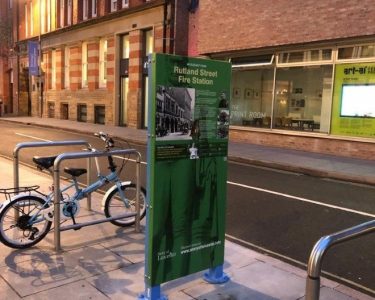THIRTY new heritage landmarks, including an Art Deco tea warehouse and a fragment of Roman wall, have been added to a list of structures and buildings, which are deemed architecturally or historically important to Leicester.
New additions made to Leicester City Council’s local heritage asset register, include Shaftesbury Hall, built in 1908 as the former Leicester Boys and Girls Institute by Lady Rolleston, on Holy Bones; and the Old Christian’s Meeting House, on Laburnum Road, which was originally built in the early 20thcentury as part of the development of the Humberstone Garden Suburb.
Also among the highlights are a former tea warehouse built in the Art Deco style in 1936 on Linden Street, in North Evington (pictured) ; a small section of Roman wall uncovered in 2005 during major development work on Junior Street, close to St Margaret’s Way; and, the site of a potential hill fort or hill slope enclosure which could date back to 800BC, located on Leicestershire Golf Course in Evington.

Other additions include the late 19th century St Barnabas School building, in North Evington; Glenfrith House, in Beaumont Leys, which dates back to the 1880s and was converted into Glenfrith Hospital when the NHS was founded in 1943; a locally rare example of a 1930s Leicester Co-operative Society Shop on Aylestone Road; and the Shree Mandata Samaj Sahayak Mandal Hindu Centre on Hartingdon Road.
Three traditional red post boxes have also joined the list – the oldest one, on Evington Lane, has been in use for over 120 years.
Deputy city mayor and city council heritage champion Cllr Adam Clarke said: “The addition of these 30 new locally important buildings and structures to the list shows our continuing dedication to protecting the city’s architectural heritage.
“The local heritage asset register is an important way of recognising the buildings, places and other landmarks that are important to the people and history of Leicester. And with these new additions, it continues to reflect the rich and diverse architectural heritage that our city has to offer.”
All 30 new entries on the local list were considered by a panel made up of Cllr Clarke, local historian and chair of the Conservation Advisory Panel Richard Gill, and former chair of the Leicestershire and Rutland Society of Architects Nils Feldman.
Inclusion on the register does not offer the same level of protection as listed status. However, it does ensure the historical and architectural significance of the buildings and landmarks is taken into account when considering planning applications and development opportunities.
To find out more, visit: www.leicester.gov.uk/LocalList







